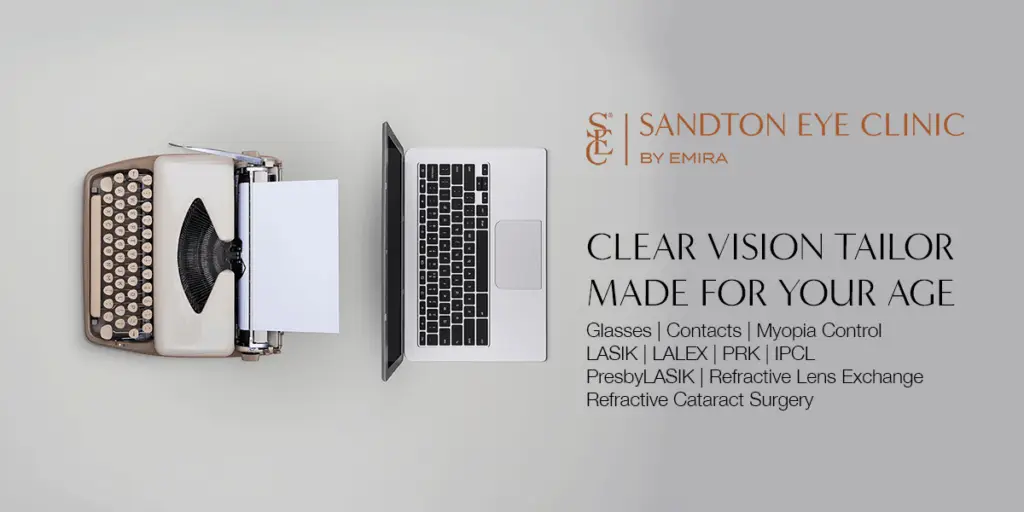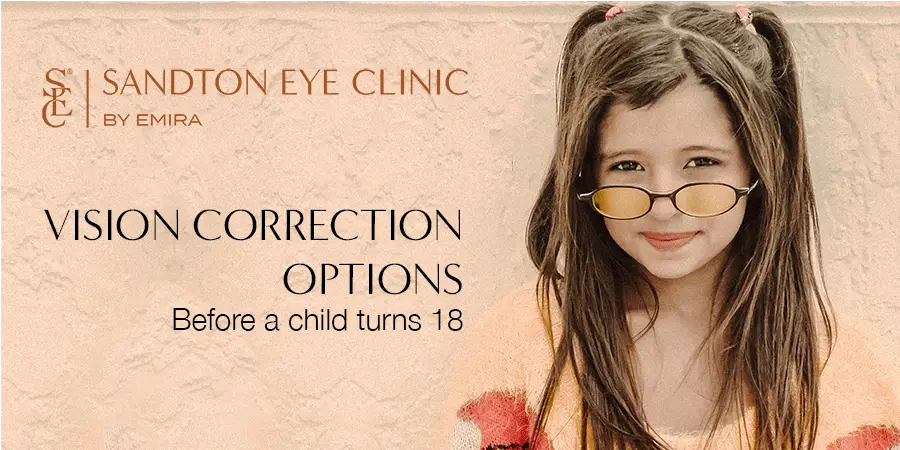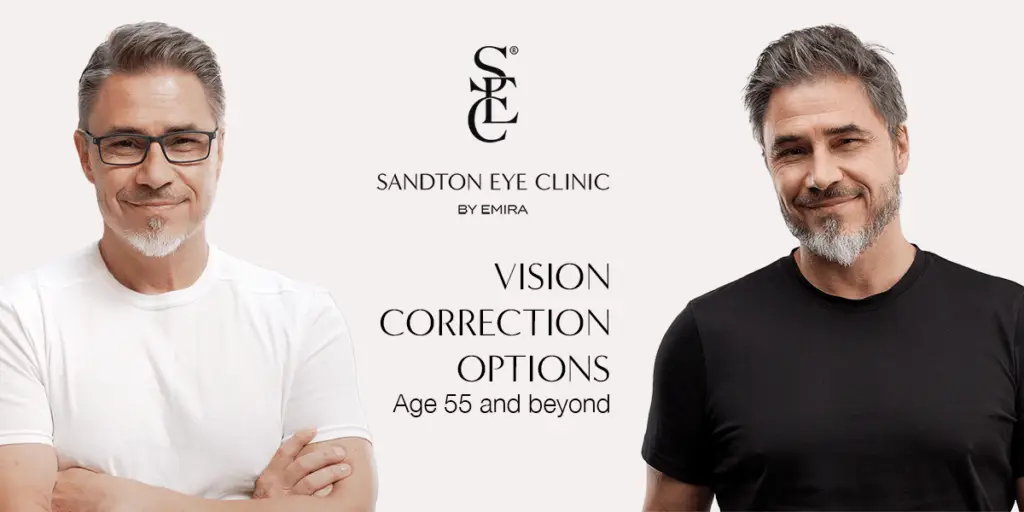What is the best age and life stage to get laser vision correction?

LASIK is the buzzword but vision correction isn’t a case of one-size-fits-all. There is a range of vision correction procedures, customized for each individual based on your micro-anatomy, age, prescription and lifestyle. You might be young, craving action or more mature with an adventurous side that wants to enjoy the good things in life. Once you realize you deserve better vision, it is important to investigate your options.
The best time to plant a tree was 20 years ago, the next best time is now. From myopia control in childhood to prevent progression right through to LASIK and eventually refractive cataract surgery, no matter your age, there are options to protect and improve vision. The options in treating myopia, hyperopia, astigmatism and presbyopia is often complicated and confusing. Please continue reading for a simple breakdown of your treatment options based on your age. Please note that there are overlaps in the age groups.
Vision Correction before the age of 18?

Because the eye is still growing there are no surgical options to permanently correct your vision before 18. The obvious option for childhood vision correction is glasses. You can probably remember the day you got your first pair of glasses. Seeing details that you never knew existed. Amazingly even toddlers love wearing their glasses. Children as young as eight may be able to wear contact lenses but it is often not recommended until age twelve. It is not so much about age but more about the responsibility. It is important that your child can wear, clean and store a contact lens correctly to avoid infection.
Studies show that spending at least 2 hours playing outside in natural light every day can reduce myopia progression in children. Try to limit the use of digital devices and balance screen time and outdoor time. While myopia cannot be reversed, the goal of myopia control is to keep it from getting worse. The purpose is to protect a child’s eye health in the future, despite still needing to wear glasses or contact lenses. Once a child turns 18 laser vision correction and spectacle independence is possible. Myopia control is a specialised field and not offered by all optometrists and ophthalmologists. It is important to prevent myopia from becoming worse because high myopia increases the risk of serious eye problems later in life. Vision threatening complications associated with high myopia include glaucoma, cataracts, retinal detachment and even blindness.
Myopia control consists of three main modalities. Low dose Atropine eye drops is used for children between 5 and 18 years of age. The drops are placed in the eye at bedtime. Although doctors do not know exactly how it works, it seems to keep the eye from growing in length and prevents worsening of myopia. Peripheral defocus contact lenses can be worn by children 6-12 years of age. The focus of the lens is arranged almost like a dart board. The central area or bull’s eye focusses central vision. The peripheral vision is blurred. This is thought to slow eye growth and prevent Myopia from getting worse. Like with any contact lens there is a risk of corneal infection. Orthokeratology (Ortho-K) is a contact lens worn at night to correct blurry vision during the day. These lenses change the shape of your cornea while you sleep for clear focus the next day. The vision correction with Ortho-K is not permanent and your myopia will return when you stop wearing them. It may however provide permanent reduction in myopia progression. Like with other contact lenses there is also an infection risk. Ortho-K lenses are more difficult to fit and you may need more follow up visits.
VISION CORRECTION: Ages 18-40

Having LASIK at age 18 means that you will have good near and distance vision for the longest time possible and get the most improvement in quality of life. You will save the most on glasses and contact lenses. As a bonus, young people also heal amazingly well. Looking at vision correction options LASIK is the flagship procedure.
LASIK is a quick outpatient procedure that takes about 15 minutes per eye. Recovery if fast and most patients can return to work the next day with 90% of their results achieved by day one. A thin flap is made in the cornea. The tissue under the flap is reshaped to correct refractive errors like nearsightedness, farsightedness, and astigmatism.
LALEX is similar to LASIK but only a lenticule is extracted through a keyhole with no flap. This is often preferred for those with dry eyes. For patients with thin corneas and those involved in contact sports, PRK is often the procedure of choice. It is like LASIK with similar long-term outcomes but longer recovery time. With PRK no flap is made, and the reshaping of the cornea leaves an area where the epithelium must regrow. This explains the post operative discomfort and longer recovery.
For those with very high scripts or thin corneas Implantable Contact Lenses are often a better option. An artificial lens is implanted leaving your natural lens in place. This procedure is done in a hospital theatre and often comes at a higher price but has a fast recovery and great results.
VISION CORRECTION: Ages 40-55

Around 40 you might have been wearing glasses all your life or only recently started needing readers. This age is the earliest age you can do blended vision which should also eliminate the need for readers. For the correction of presbyopia your treatment options are similar to the previous age group with the laser calculations and lenses specialized to correct vision at al distances. PresbyLASIK is often the first option but depending on your anatomy, Presbyopic PRK and implantable contact lenses may also be considered.
This should be permanent until old age gives you cataracts. If you had LASIK at a younger age you will also eventually need a PresbyLASIK top up when you start needing readers. In this age group you should visit your optometrist or ophthalmologist every two years to screen for other eye diseases like glaucoma that may affect your vision.
VISION CORRECTION: Ages 55 and older

When a patient is older and there are changes to their natural lens it means that their vision may be affected by cataracts or that lens changes may influence their vision soon. In these patients a refractive surgeon may often consider removing the natural lens and replacing it with a multifocal lens. This is called refractive lens exchange. For those who already have symptomatic cataracts, cataract surgery with a multifocal lens may be the best option to achieve spectacle independence. It is important at this age to also screen for other eye diseases anually.
With all these available procedures you may wonder, how on earth do I know what is the best option for me? You don’t have to. When you visit your refractive surgeon, they can assist you to choose the option that will be the safest for you and give you clear vision for the longest possible time. All these options have very similar results if the correct procedure is performed for the correct patient.
Your refractive surgeon will consider your age, refraction, anatomy of your eye and cornea, other eye diseases, and very important, your lifestyle. This makes it possible to create a customized treatment for each patient that will give them the best long-term improvement in vision.
Stay committed to your decision to see clearly. Stay flexible in your approach.
Written by Dr Yolandie
#SandtonEyeClinic #DrLourensCoetzee #DrPreciousPhatudi #DrMelodySun #MyopiaControl #LASIK #PresbyLasik #Cataract
Disclaimer: Glasses are safe because there is no medical procedure involved. If you are happy to wear glasses LASIK is not for you. LASIK is a lifestyle procedure providing unaided vision. According to research the cumulative risk of contact lenses may be more than LASIK. Three-Year Longitudinal Survey Comparing Visual Satisfaction with LASIK and Contact Lenses https://pubmed.ncbi.nlm.nih.gov/27208981/
